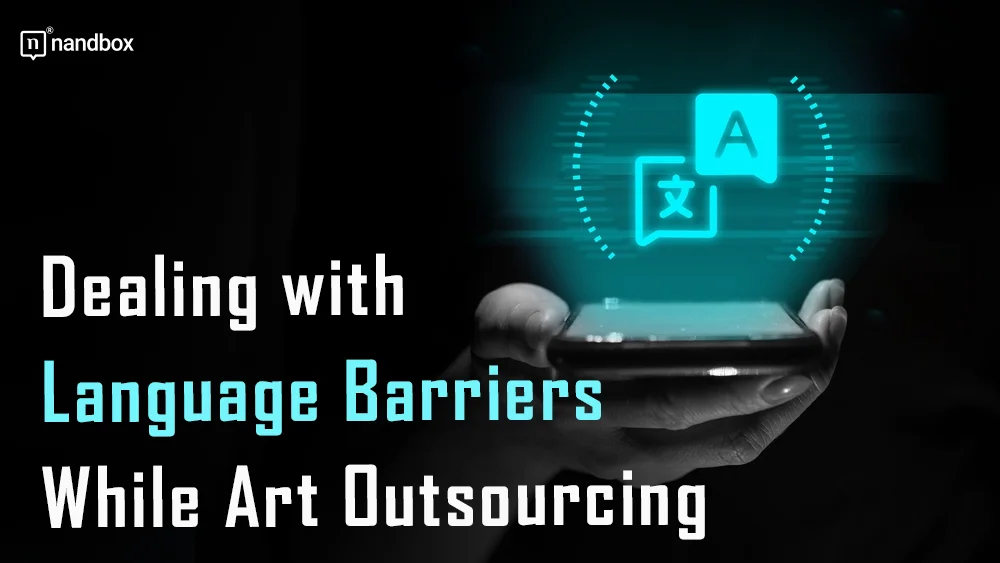With tightly scoped constraints, structured collaboration cadences, and development discipline carrying the creative vision, distributed game art teams thrive. This guide outlines key strategies for art directors to deal with language barriers while outsourcing. Don’t let language obstacles undermine innovation; instead, let global diversity propel production to new heights.
The Importance of Clear Communication
Clear communication is key to dealing with language barriers. It crucial when outsourcing any task, but especially creative work like art and design. Even small misunderstandings can lead to assets being created differently than intended, resulting in wasted time and resources fixing or redoing work.
When working across languages, extra care needs to be taken to ensure instructions, feedback, and descriptions are understood accurately on both sides. Things like technical terminology, stylistic descriptors, and abstract creative direction can easily get lost in translation.
Define Requirements in Detail Upfront
The best way to minimize miscommunications is by clearly defining visual and technical requirements upfront before production begins. Consider creating the following reference materials:
- Style guide: comprehensive examples of the desired art style, including color palettes, textures, lighting, camera angles, and more. The more visual references given, the better.
- Art bible: documents describing any proprietary characters, environments, objects, or other creative elements, including concept art.
- Technical specifications: resolution, polygon counts, formats, and any other technical specifications described clearly. A visual diagram can help.
- Milestones Schedule: A detailed schedule covering concept approvals, updates and check-ins, and delivery milestones.
Taking the time upfront to thoroughly document expectations, both visually and in writing, establishes a reliable shared reference point for the entirety of production.
Provide Plenty of Visual Reference
Supplement written documentation with substantial visual reference materials. Given the subjective and interpretative nature of creative work, visual examples are less likely to undergo misinterpretation across languages.
Build out an extensive mood board, create rough sketches or overpaints showing the intended result, provide samples of comparable styles from other games or sources, and offer as much visual context as possible. Reference images speak volumes compared to written descriptions alone.
Use Comparison Tools
There are many online tools that allow visual comparisons between images, such as Workshops and Sketchfab. These are extremely valuable when reviewing assets that are created by the game art outsourcing studio, as they allow you to overlay the original reference image with the submitted asset file. Differences pop out visually, allowing you to provide precise feedback on adjustments needed while eliminating language confusion.
Online placeholders like LoremPixel can also help generate “dummy” images to use as visual guides showing resolution, proportions, compositions, and layouts for things like environments, textures, and UI elements. These make your specifications much more clear upfront.
Schedule Regular Review & Feedback sessions.
Don’t wait until final delivery milestones to review work. Schedule regular check-ins as the project progresses to provide feedback and ensure alignment. Frequent reviews let you course-correct early before too much time is invested in going down an undesired creative path. Brief daily or weekly video calls also help build rapport and get everyone on the same page.
Test Frequently
Game art outsourcing introduces additional complexity given all the contingencies of implementing 2D and 3D assets into game engines and testing visually in the context of actual gameplay. Make sure to factor in time and resources for frequent testing to ensure that the game art studio is performing art correctly before final delivery.
Provide notes regarding any visual or technical issues noticed when testing, along with reference images or videos recording the problem observed. Catching defects, inconsistencies, compatibility issues, and other bugs early streamlines revisions.
Embrace Iteration
Creative work, especially art and design, often requires a highly iterative approach. Be prepared for multiple rounds of feedback and revisions to achieve the desired visuals and style, which may evolve as work progresses.
Maintain patience and nurture positive relationships throughout iterations so that talent remains engaged, responsive, and actively communicates any questions or clarifications needed from their end. Keep momentum going by quickly providing references, annotations, and documentation for subsequent rounds until all stakeholders are fully satisfied with the end result.
Hire Localization Specialists
For larger or ongoing outsourcing needs involving multiple overseas talents, consider hiring dedicated localization experts well versed in associated languages, regional cultures, and communication norms. They can closely liaise across all teams, ensuring teams interpret instructions correctly and construct feedback in a motivating yet tactful manner. This helps reduce friction while keeping output on track.
Invest in Relationships
At the end of the day, art is highly collaborative. Establishing positive and productive working relationships is key in managing the complexities of outsourcing for large or multi-phase creative projects. Engaging with partners to align on goals, processes, technical constraints, and cultural practices ensures a cost-effective collaboration that results in exceptional game art.




